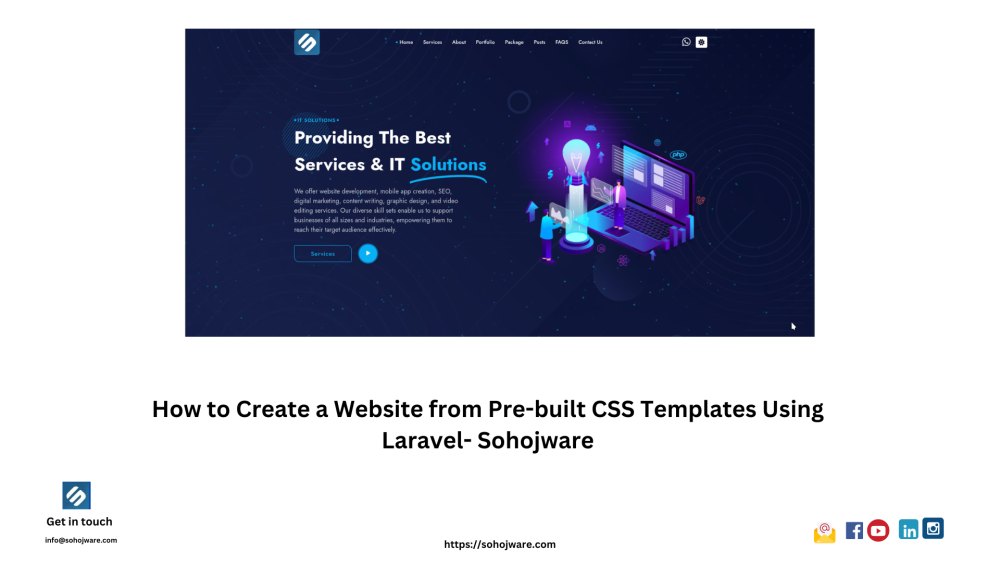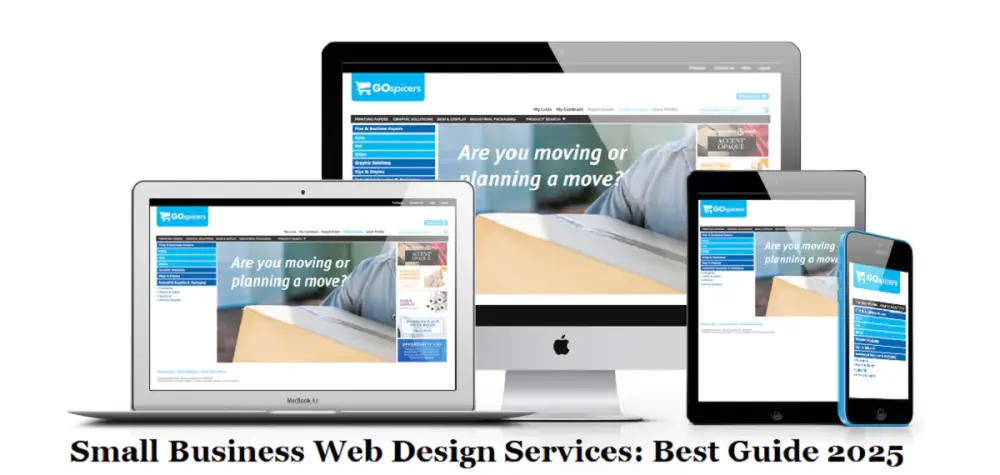In today's fast-paced digital world, a captivating website is no longer a luxury; it's a necessity. Whether you're a seasoned entrepreneur or a budding freelancer, establishing a strong online presence is crucial for attracting customers and showcasing your brand. But building a website from scratch can be a daunting task, especially for those without extensive coding experience.
That's where Laravel comes in. This robust PHP framework streamlines the development process, allowing you to craft dynamic and secure websites with ease. But even with Laravel's streamlined approach, building the visual design from scratch still requires significant effort. This is where pre-built CSS templates enter the scene, offering a time-saving and visually stunning solution.
Sohojware, a leading web development company, is here to guide you through the process of leveraging pre-built CSS templates with the power of Laravel to create a website that stands out.
Advantages of Using Pre-Built CSS Templates with Laravel
While crafting a website's design from scratch offers complete creative control, pre-built CSS templates provide a plethora of benefits, especially for those starting with Laravel:
-
Faster Development: Pre-built templates come with pre-defined styles and layouts, saving you countless hours on design and development. This allows you to focus on integrating the template with Laravel's functionalities and building your website's core features.
-
Visually Appealing Design: Many pre-built templates boast modern, responsive designs that cater to a variety of industries and purposes. This ensures your website looks professional and user-friendly from the get-go.
-
Cost-Effective: Pre-built templates are often readily available for free or at affordable prices, significantly reducing design costs compared to hiring a dedicated web designer.
-
Customizable Foundation: While templates offer a pre-built structure, most are highly customizable. You can easily modify colors, fonts, and layouts to fit your brand identity within the framework of the template.
Steps to Create a Website using Laravel and Pre-built CSS Templates
Here's a step-by-step guide to help you leverage the power of Laravel and pre-built CSS templates:
1. Choosing a Pre-built CSS Template:
-
Identify Your Needs: Start by clearly defining the purpose of your website. What kind of content will it showcase? Do you need a contact form or an e-commerce platform? Understanding your website's goals will help you select a template that aligns with your functionalities.
-
Explore Template Marketplaces: Numerous online marketplaces offer a wide range of free and premium pre-built CSS templates. Popular options include ThemeForest, WrapPixel, and Start Bootstrap. Sohojware can also assist you in finding the perfect template based on your specific requirements.
-
Responsiveness is Key: Ensure the template you choose is fully responsive, meaning it adapts seamlessly to different screen sizes and devices. This is crucial for providing a positive user experience across desktops, tablets, and smartphones.
2. Setting Up Your Laravel Project:
-
Laravel Installation: If you haven't already, install Laravel on your development machine. The official documentation provides detailed installation instructions (https://laravel.com/docs/9.x/installation).
-
New Laravel Project: Use Laravel's command-line interface (CLI) to create a fresh new Laravel project.
3. Integrating the Template:
-
Template Acquisition: Download the pre-built CSS template you selected.
-
Copy Template Assets: Extract the template's files, typically including HTML, CSS, and JavaScript files, into your Laravel project's appropriate directories (usually resources/views and public/css).
4. Customizing the Template with Laravel Blade:
Laravel's Blade templating engine allows you to seamlessly integrate your template's HTML structure with Laravel's functionalities.
-
Blade Syntax: Learn the basics of Blade syntax, which utilizes special tags to inject dynamic content and utilize Laravel's features within your template's HTML code.
-
Replacing Static Content: Identify static content within the template and replace it with Blade directives to pull dynamic data from your Laravel application. For example, replace static menu items with Blade directives that retrieve menu data from your database.
5. Building Dynamic Features with Laravel:
-
Routing and Controllers: Create routes and controllers in your Laravel application to define how users will interact with your website. For instance, create a route to handle a contact form submission or a controller to manage product data for an e-commerce website.
-
Database Integration: If your website requires storing data, leverage Laravel's Eloquent ORM to interact with your database effectively.
-
Query Building: Eloquent provides a fluent interface for building database queries. You can easily retrieve, create, update, and delete data using methods like get, find, create, update, and delete.
6. Testing and Debugging:
-
Thorough Testing: Ensure your website functions as expected by conducting rigorous testing. Test various scenarios, including different user inputs, edge cases, and browser compatibility.
-
Debugging Tools: Utilize Laravel's built-in debugging tools and techniques to identify and resolve any issues that may arise during development.
7. Deployment:
-
Hosting Environment: Choose a suitable hosting environment based on your website's requirements. Consider factors like performance, scalability, and security.
-
Deployment Methods: Deploy your Laravel application to your hosting environment using methods like FTP, SSH, or deployment tools like Laravel Forge or Envoyer.
FAQs
1. Can I use a pre-built CSS template with any Laravel project?
While most pre-built CSS templates are compatible with Laravel, it's essential to check the template's documentation or contact the developer to ensure compatibility. Some templates may require specific Laravel versions or configurations.
2. How can I customize a pre-built CSS template to match my brand identity?
Most pre-built CSS templates offer customization options. You can typically modify colors, fonts, and layouts by editing the template's CSS files. Additionally, Laravel's Blade templating engine allows you to inject your own custom CSS styles.
3. Is it possible to integrate pre-built CSS templates with other frameworks or CMS platforms?
While it's generally possible to integrate pre-built CSS templates with other frameworks or CMS platforms, the process may vary depending on the specific technologies involved. Some templates may require additional modifications or integrations.
4. Can I use a pre-built CSS template for an e-commerce website?
Yes, there are many pre-built CSS templates designed specifically for e-commerce websites. These templates often include features like product catalogs, shopping carts, and checkout processes.
5. Can Sohojware assist in creating a website using Laravel and pre-built CSS templates?
Absolutely! Sohojware offers expert web development services, including the integration of pre-built CSS templates with Laravel. Their team can help you choose the right template, customize it to your brand, and build a fully functional website.
By following these steps and leveraging the power of Laravel and pre-built CSS templates, you can create a visually stunning and functional website that effectively showcases your brand and engages your audience.




